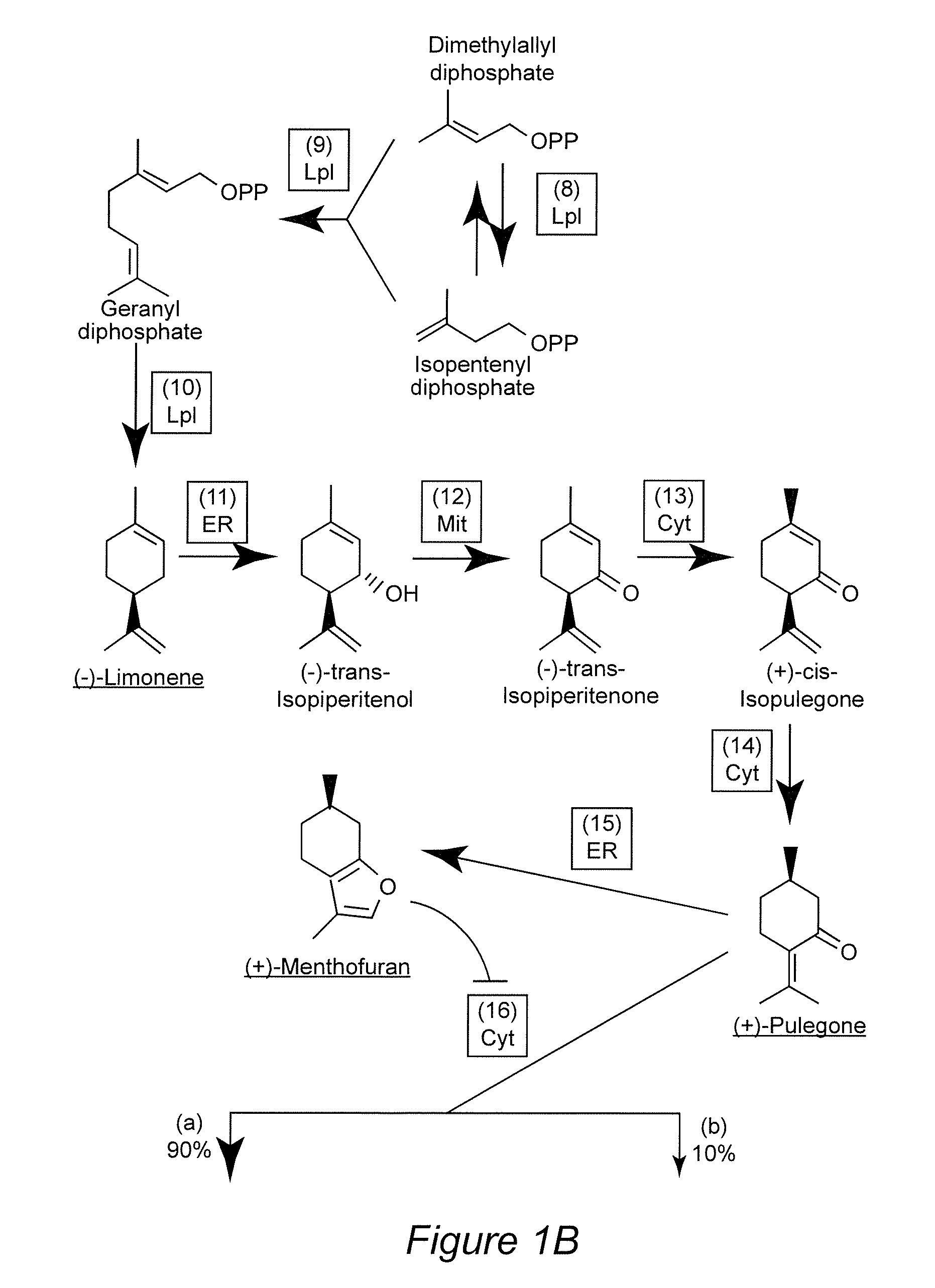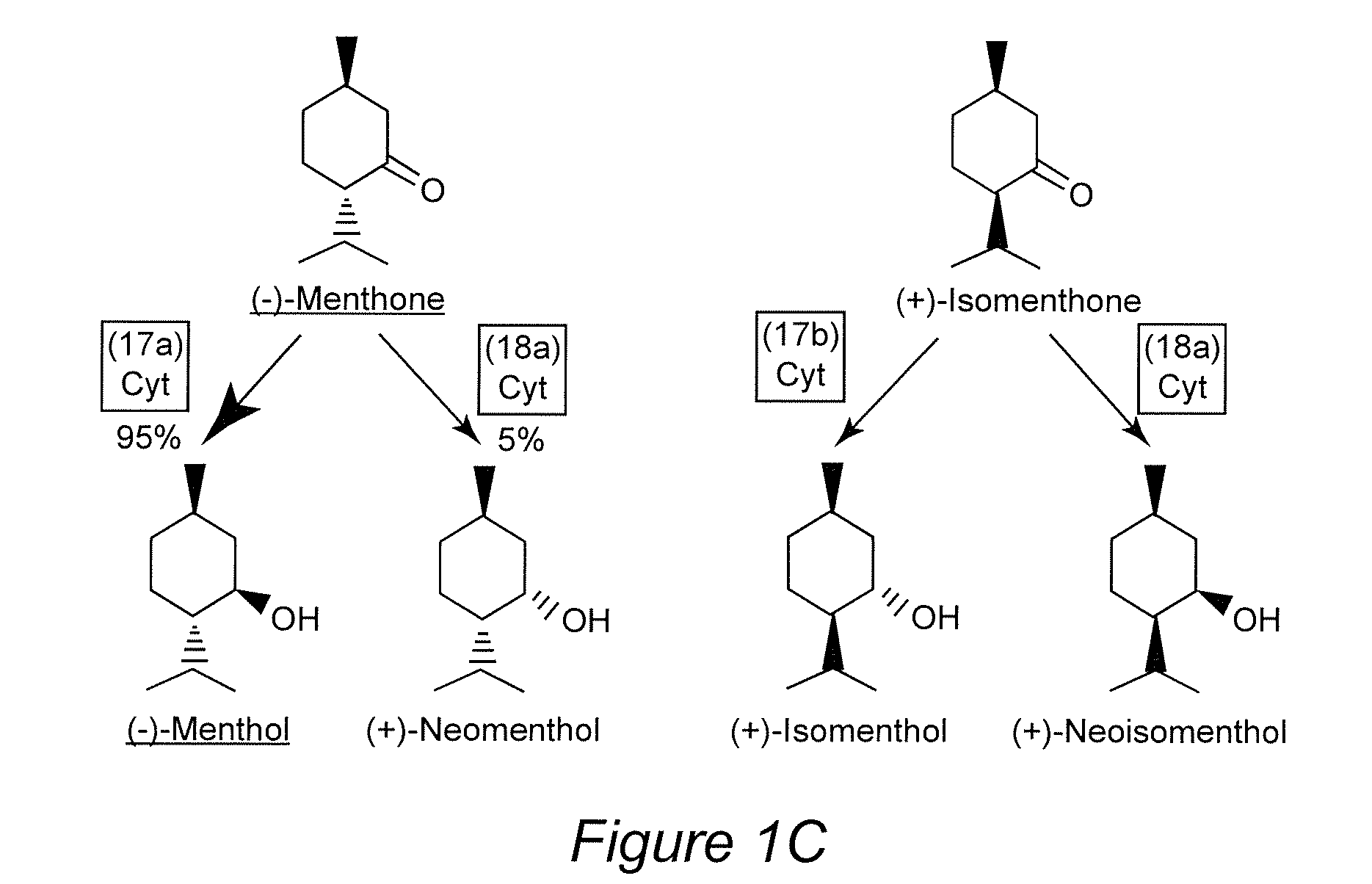Production of terpenes and terpenoids in glandular trichome-bearing plants
a technology of trichomes and terpenoids, which is applied in the direction of lyse, biochemistry apparatus and processes, fermentation, etc., can solve the problems of low accumulation level, low accumulation level, and the ability to produce chemicals that would be toxic to other plant tissues
- Summary
- Abstract
- Description
- Claims
- Application Information
AI Technical Summary
Benefits of technology
Problems solved by technology
Method used
Image
Examples
example 1
Genotype-Dependent and Environmental Effects on Essential Oil Yield Correlate Directly with the Density of Glandular Trichomes
1.1 Peppermint as a Model for Essential Oil Production
[0036]Efforts to modulate essential oil yield and composition have been successful but further improvements can only be achieved if one can build on an in-depth appreciation of the currently ill-understood processes controlling glandular trichome formation and monoterpene biosynthesis. Mahmoud and Croteau (2001) reported that, by over-expressing the gene encoding 1-deoxy-D-xylulose 5-phosphate reductoisomerase (DXR) in peppermint plants, an up to 1.5-fold essential oil yield increase was observed. Antisense suppression of the (+)-menthofuran synthase (MFS) gene led to a dramatic decrease in the amounts of the undesirable side product (+)-menthofuran. A slight increase in overall monoterpene yields was also reported for transgenic plants with increased expression levels of the gene encoding (−)-limonene syn...
PUM
| Property | Measurement | Unit |
|---|---|---|
| Mass | aaaaa | aaaaa |
| Mass | aaaaa | aaaaa |
| Mass | aaaaa | aaaaa |
Abstract
Description
Claims
Application Information
 Login to View More
Login to View More - R&D
- Intellectual Property
- Life Sciences
- Materials
- Tech Scout
- Unparalleled Data Quality
- Higher Quality Content
- 60% Fewer Hallucinations
Browse by: Latest US Patents, China's latest patents, Technical Efficacy Thesaurus, Application Domain, Technology Topic, Popular Technical Reports.
© 2025 PatSnap. All rights reserved.Legal|Privacy policy|Modern Slavery Act Transparency Statement|Sitemap|About US| Contact US: help@patsnap.com



